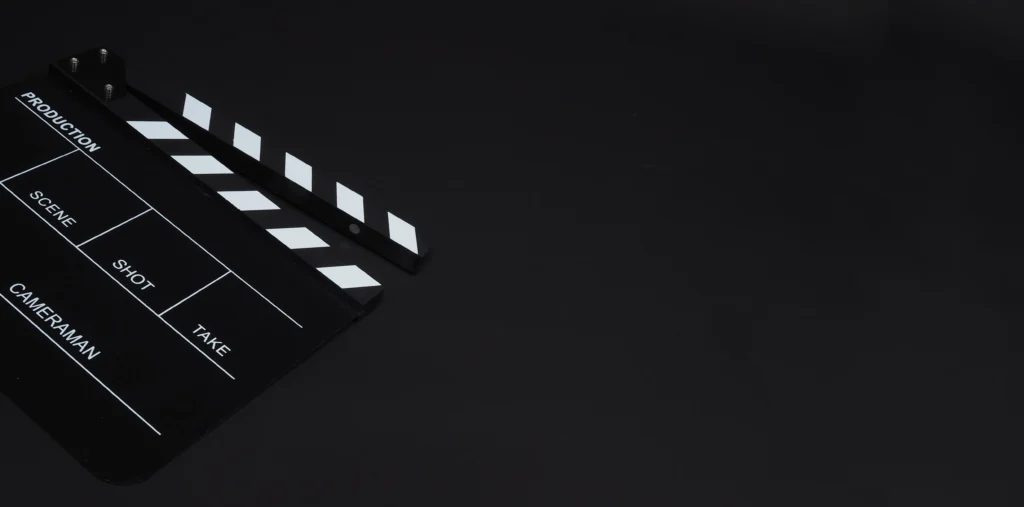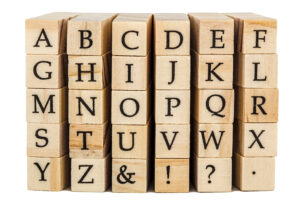
Film title sequences are not just an afterthought—they set the tone, convey emotion, and prepare audiences for the story they are about to experience. A key part of these sequences is the font used for the title. Over the years, film title fonts have evolved to become an essential element of cinematic branding. This article delves into some of the most iconic and well-chosen fonts used in film titles, exploring how they reflect the tone and themes of the movies they represent.

The font used in a movie title can significantly affect a viewer’s perception of the film. Fonts convey mood, genre, and even hint at the film’s narrative. For example, a horror movie may use sharp, jagged fonts to evoke fear, while a romantic comedy might opt for something more playful or elegant. Fonts matter because they are a form of visual communication that connects with audiences at an emotional level.
In some cases, the font becomes as iconic as the film itself. Take, for instance, the neon-lit font in the title sequence of “Drive” or the bold typeface used in “Star Wars.” These fonts are instantly recognizable and tied to the overall branding of the movies.
Several films have set the standard for iconic title fonts, establishing trends that have lasted for decades. Below are some notable examples from classic films that have used fonts in innovative and memorable ways.
Modern films continue to innovate when it comes to title fonts, often drawing on past styles while incorporating contemporary design elements. Typography in film titles has become more experimental, allowing directors and designers to push creative boundaries.
For example, Quentin Tarantino’s “Kill Bill” uses a bold, retro font reminiscent of 1970s grindhouse cinema, signaling the film’s homage to that era. Similarly, Wes Anderson’s films, like “The Grand Budapest Hotel,” use elegant and carefully curated fonts that match the whimsical, detailed world-building of his narratives.
The choice between serif and sans-serif fonts plays a significant role in shaping the tone of a film. Serif fonts, characterized by small lines attached to the ends of letters, often give a more traditional, classic, or historical feel. These are common in period dramas, fantasy films, and epic sagas.
In contrast, sans-serif fonts, which lack these lines, convey modernity and simplicity. These are often seen in science fiction, action, and thrillers. For example, the use of sans-serif in “The Social Network” title sequence reflects the modern, sleek nature of the tech world it portrays.
Horror films frequently use typography to evoke a sense of dread or unease. The fonts used in horror movie titles are typically sharp, jagged, or distressed to visually communicate fear. For example, the title of “The Shining” features bold, heavy block letters that stand out starkly against the iconic image of the hotel, reinforcing the film’s sense of isolation and impending terror.
Science fiction films often rely on fonts that suggest futurism, technology, or outer space. Sleek, angular, and sometimes digital-looking fonts are common in this genre, contributing to the sense of otherworldliness or advanced technology.
The title font for “Blade Runner” is a perfect example of this, with its blocky, futuristic design that hints at the cyberpunk aesthetic of the film. Another iconic sci-fi font is the one used in “Alien,” where the slow, letter-by-letter reveal of the title builds suspense while giving the viewer a sense of being in an unfamiliar, eerie environment.
Animated films often use playful, whimsical fonts that appeal to a younger audience. Fonts in animated films are typically bright, bold, and fun, matching the lively and imaginative nature of the content.
In some cases, a particular font becomes synonymous with a movie franchise. These fonts are reused across sequels and spinoffs, helping to establish a consistent visual identity for the entire series.
One of the most famous examples is the “Star Wars” logo, which has remained largely unchanged since the original 1977 film. The bold, sans-serif font with elongated letters has become one of the most recognizable logos in film history. Similarly, the “Harry Potter” series uses a unique, lightning-shaped serif font that immediately evokes thoughts of magic and adventure.
Fonts play a crucial role in the world of film, helping to set the tone, convey the genre, and build anticipation before the first scene even begins. From classic serif fonts that give a nod to tradition and history, to sleek sans-serif fonts that hint at the futuristic, typography in film titles is an art form all its own.
As we’ve explored, fonts are carefully chosen to match the themes and emotions of the movies they represent. They can become iconic symbols of the films themselves, from the bold title of “Star Wars” to the disorienting font of “Vertigo.” Ultimately, the best title fonts in film not only look good but also contribute to the storytelling in meaningful ways, making them unforgettable to audiences worldwide.